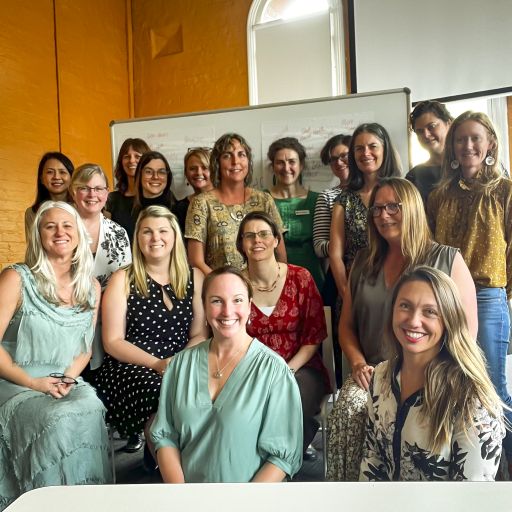Trust is critical within workplace teams.
In fact, you could say it’s the secret sauce of team success.
If you’re in a leadership role, you probably already know this. But actually creating a culture of trust within your teams can seem like a challenge, especially if mistrust has already reared its ugly head.
The reason it can seem challenging is that trust is an intangible concept. It’s not something you can see or touch, and you can’t buy or manufacture it instantly.
However, while it may be immaterial, the importance of trust in teams can’t be overstated, and it is possible to build it. It just requires a little insight, intentional action and some metaphorical marbles!
The benefits of team trust
First, let’s drill down into just why trust is so important in a team.
We know it’s desirable, but why? Here are some of the key benefits:
- Enhanced communication – If team members trust each other, they’re more likely to share information, ask for help when needed, and offer constructive feedback. This avoids misunderstandings, clears conflict quicker and ensures everyone works in sync.
- Increased collaboration – A level of team trust encourages further sharing of ideas, opinions, feedback and increased collaboration as your team members will generally be more open and supportive. This can lead to more creative and innovative solutions and team success.
- Greater productivity – When your team members trust each other, they can confidently delegate tasks and rely on one another to deliver quality work. This allows individuals to focus on their own responsibilities, demands less micro-management, and boosts overall productivity and efficiency.
- Higher engagement – Trust among teammates and leaders contributes to a positive work culture where team members feel valued and respected. The result is that they’re more engaged in their work, committed to the team goals and satisfied with their overall work experience.
Overall, trust within a work team promotes a positive and collaborative atmosphere where individuals feel safe, supported, and empowered to contribute their best. This ultimately leads to better outcomes and success for the team.
What happens without trust?
So what happens on the flip side?
To best explain what happens without team trust, picture this.
One team member isn’t delivering their work on time. This is affecting the team’s overall progress and productivity, and people are questioning their reliability and commitment.
Collaboration is becoming strained, and members are starting to work independently, focusing solely on their own tasks to avoid relying on others.
Weaknesses and mistakes are being kept hidden, and people are hesitant to ask for help or constructive feedback. They’re also jumping to conclusions about the intentions and assumptions of others without attempting to clarify them.
As a result of this, an unfriendly culture is developing. The team is finding reasons to avoid spending time together and holding grudges.
At this stage, trust is all but gone, and team effectiveness and productivity aren’t what they should be.
If this scenario or elements of it sound familiar, it’s time to start rebuilding that trust. But what do you need to do?
Trust and the marble jar
The bottom line of building trust is vulnerability.
To grow trust, leaders and team members need to get vulnerable. This means being in a state of openness to emotional, physical, or psychological harm.
To be in this state, you need to feel safe enough to take risks and share ideas with your team without feeling insecure or embarrassed.
Dr Brené Brown (yes, we love her!) explains trust using a marble jar analogy. Essentially it goes like this: for every moment of trust earned, one marble goes in the jar. It’s only once that jar is full that trust exists.
Essentially, the marble jar sees trust as being built over time in small everyday moments. Every time you deliver your work on time. Every time you respond to an email, Every time you share ideas with your team or help someone out. These are all small moments of earned trust—and another marble in the jar.
So, to grow trust in your teams, the task is to enable these small moments. Here are our three recommended ways of doing that:
- Be vulnerable – Get to know your team, listen and lead by example. This means being vulnerable yourself and sharing what you are comfortable with who you’re comfortable with.
- Prioritise communication – Transparency is key to trust, so encourage open, honest communication and set the new norm of asking for help or admitting mistakes within your team.
- Promote collaboration and knowledge sharing – Use platforms for knowledge sharing or create time for team-building activities to allow your teams to become more comfortable with one another.
Building trust through BRAVING
Importantly, you need to bear in mind that marbles can just as easily be taken out as they can be put in, so making sure everyone is taking accountability for their own work and behaviour is a must.
You can encourage this using Brené’s acronym for building trust, BRAVING. BRAVING is a framework to explain the elements of trust-building in relationships.
Let’s take a quick look at what it means:
B stands for boundaries – Establishing and respecting clear boundaries is essential for building trust. It involves setting and maintaining appropriate personal and professional boundaries, as well as respecting the boundaries of others.
R stands for reliability – Being reliable means following through on commitments, meeting deadlines, and honouring agreements. You need to be accountable for your actions and demonstrate consistency in your behaviour.
A stands for accountability – Taking responsibility for your actions, acknowledging mistakes, and making amends when necessary is crucial to trust. Accountability involves owning up to the impact of your actions and working to make things right.
V stands for vault – The ‘vault’ refers to confidentiality and trustworthiness in keeping sensitive information shared in confidence. It means respecting others’ privacy and not sharing or gossiping about confidential or personal matters.
I stands for integrity – Acting with integrity means aligning your actions with your values and showing honesty, authenticity, and moral character. It’s about choosing courage over comfort and doing the right thing, even when challenging.
N stands for non-judgement – Creating a safe space free from judgement is so important for building trust. It means not making assumptions, withholding judgement, and cultivating empathy and understanding.
G stands for generosity – Being generous means giving others the benefit of the doubt and assuming positive intentions. So extend kindness and empathy towards others and avoid jumping to negative conclusions.
As a leader, you must demonstrate these values and behaviours daily and encourage your teams to do the same.
What does success look like?
Great working teams trust one another. They feel comfortable being vulnerable about their weaknesses, mistakes, fears, and behaviours. They also consciously work at building trust and filling that marble jar every day.
Ultimately the end goal is for your team to get to a point where team members can be completely open with one another, without filters, while, of course, remaining professional.
The result? A vibrant and in-sync team dynamic that drives great outcomes and business success.




